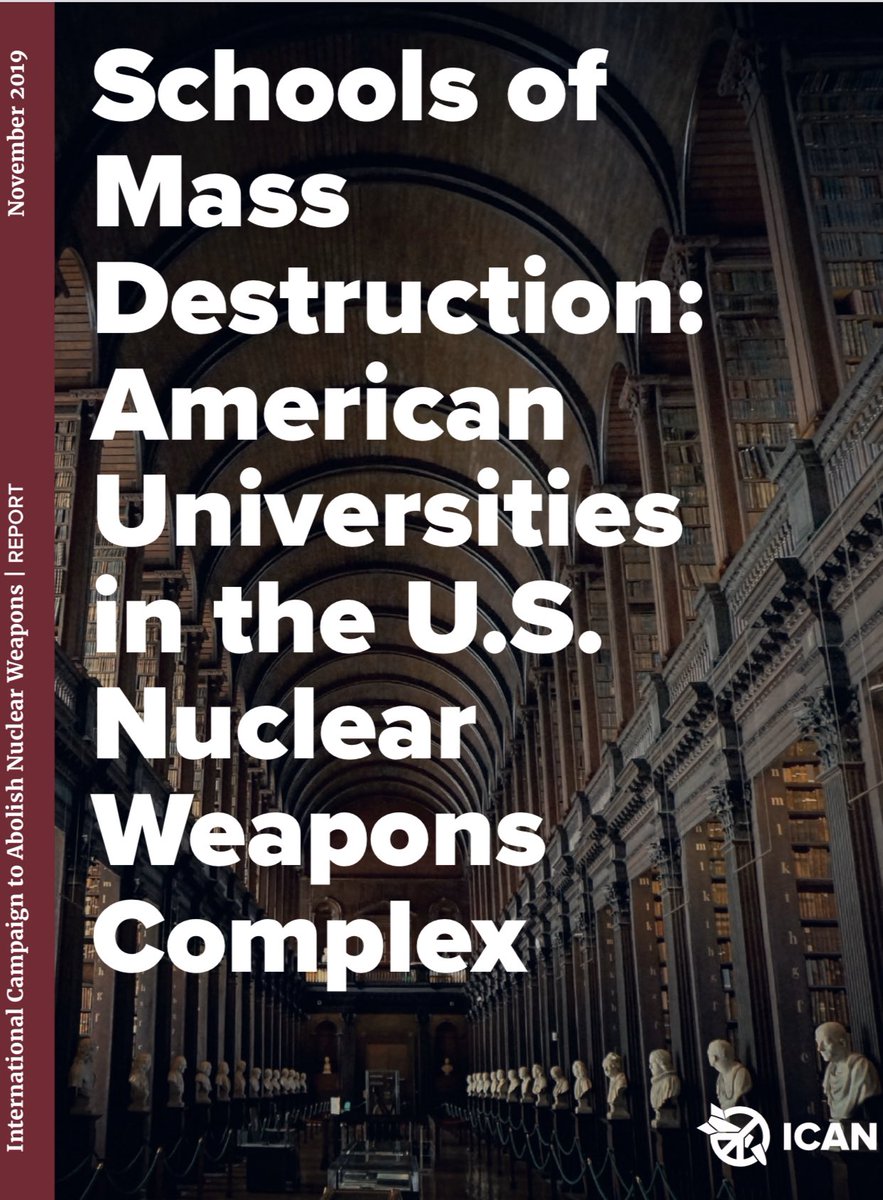What is in the report?
Universities across the
United States are implicated by this new report for work on nuclear weapons,
ranging from directly managing laboratories that design nuclear weapons to
recruiting and training the next generation of nuclear weapons scientists. Much
of universities' nuclear weapons work is kept secret from students and faculty
by classified research policies and undisclosed details from contracts with the
Defense Department and the Energy Department.
US plans to spend $100,000
per minute
over next 10 years for
nuclear weapons
How are universities complicit
Universities pursue
different pathways to help to develop U.S. nuclear weapons. Some directly
manage the laboratories that design nuclear weapons. Others partner with
laboratories to recruit and train the next generation of weapons scientists.
Still others use U.S. government funding to do basic research that is applied
to nuclear weapons work. This report identifies four concrete categories of
involvement: direct management, institutional partnerships, research programs
and partnerships, and workforce development programs.
- Direct
Management
- Institutional
Partnerships
- Research
Programs and Partnerships
- Workforce
Development
Why is this a problem?
- The nearly 14,000 nuclear weapons in the
world today pose an existential threat to every living being on earth.
Universities would be complicit in the U.S. use of these inhumane and
immoral weapons. Working on producing and maintaining them directly
contradicts many university mission statements to equip students to make
the world a better place.
- Most universities keep much of their
nuclear weapons work secret from students and faculty by allowing
classified research and not disclosing details from Defense Department and
Energy Department contracts.
- Meanwhile, 122 countries have adopted the
Treaty on the Prohibition of Nuclear Weapons, which bans nuclear weapons,
including their research and development, for the countries that join it. University activities shouldn’t contradict international
law.






/https://www.niagarafallsreview.ca/content/dam/thestar/news/canada/2021/09/25/huawei-executive-meng-wanzhou-receives-warm-welcome-upon-return-to-china/_1_meng_wanzhou_2.jpg)













No comments:
Post a Comment
Note: Only a member of this blog may post a comment.